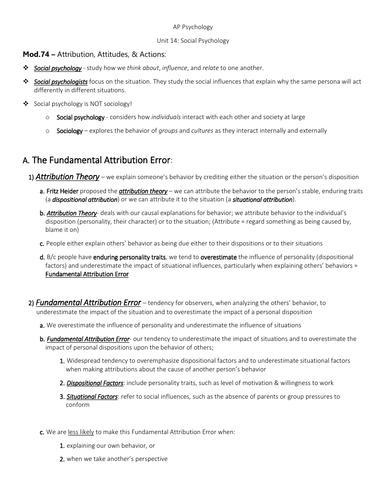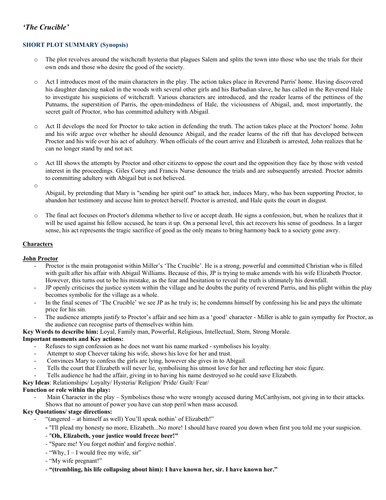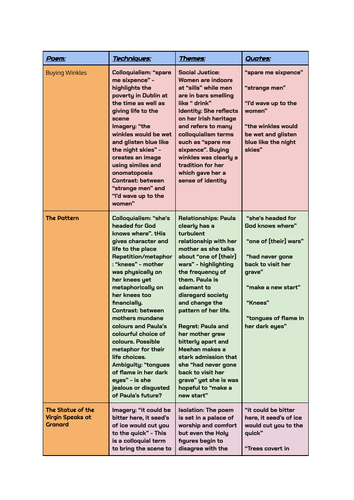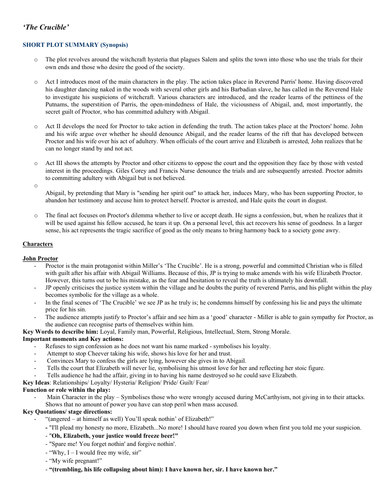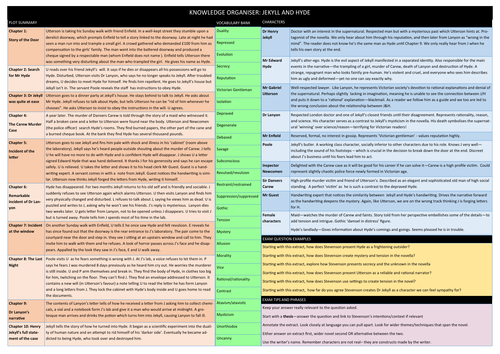
428Uploads
101k+Views
7k+Downloads
All resources

AP Psychology Social Psychology NOTES – Attribution, Attitudes, & Actions:
AP Psychology
Social Psychology
– Attribution, Attitudes, & Actions:

Paula Meehan Quick Notes
coloured grid for poems
Buying Winkles
THe Pattern
The Statue of the
Virgin Speaks at
Granard
Hearth Lesson

Narrative Writing Worksheet: Understanding Characters and Relationships Sally Rooney Normal People
Narrative Writing Worksheet: Understanding Characters and Relationships Sally Rooney Normal People

King Lear Act 1 Revision sheet
Product Description: King Lear Act 1 Detailed Revision Worksheet (Leaving Cert)
This comprehensive revision worksheet is designed to help Leaving Cert students thoroughly review Act 1 of Shakespeare’s King Lear. It includes a variety of exercises and questions to ensure a deep understanding of the play’s key events, characters, themes, and language.
Key features include:
Plot Summary Questions: Focused on the critical events of Act 1, each scene is broken down with targeted questions.
Character Analysis: Detailed questions to explore the motivations, flaws, and relationships of central characters such as Lear, Cordelia, Edmund, and the Fool.
Themes Exploration: In-depth questions on key themes, such as authority, loyalty, betrayal, and nature.
Close Passage Analysis: Students are prompted to analyze pivotal quotes and passages, revealing Shakespeare’s use of language and its thematic significance.
PEE Chain Writing Practice: Structured prompts guide students to write clear and evidence-based analytical paragraphs.
Key Quotes Identification: Matching exercises to help students identify and explain important quotes.
Multiple-Choice Questions: A quiz-style section that tests comprehension of key details in Act 1.
Ideal for in-class use or as homework, this worksheet equips students with the skills to analyze King Lear in preparation for their Leav

Elizabeth Bishop Essay Planner
The Elizabeth Bishop guide is a short guide designed to help Leaving Certificate English students understand and analyze Elizabeth Bishop’s poetry. The document provides detailed explanations, strategies for writing poetry essays, and key insights into Bishop’s themes and stylistic techniques.
Key Features of the Document:
Introduction to Elizabeth Bishop’s Poetry:
The document begins by introducing Elizabeth Bishop as a poet whose work often delves into themes of personal experience, nature, survival, and identity. It emphasizes her distinctive style, marked by detailed observation and emotional restraint.
Understanding the Leaving Certificate Poetry Essay:
Students are guided on how to approach a poetry essay, focusing on the themes and stylistic features that are commonly examined in Bishop’s work. It outlines the importance of identifying key words in the question and how to structure a response around them.
Past Exam Questions:
The document includes a section with past exam questions related to Bishop’s poetry (e.g., from 2009 and 2013). These questions focus on analyzing the themes and language used by Bishop, providing students with real-world examples of what to expect in their exams.
Sample Essay Structure:
A step-by-step breakdown of how to write a poetry essay is provided. This includes guidance on:
Crafting a strong introduction that mentions the poet and key themes.
Writing body paragraphs that analyze individual poems, with a focus on techniques like imagery, simile, and metaphor.
Ending with a thoughtful conclusion that summarizes the main points and offers a personal reflection.
Sample Essay Paragraph:
The document includes a sample paragraph based on a past exam question. It demonstrates how to analyze a specific poem (e.g., The Fish) and link it to the themes of survival and resilience using vivid imagery and personal reflection.
Key Techniques in Bishop’s Poetry:
A list of important literary techniques used by Bishop, such as:
Imagery: Her ability to paint vivid pictures through descriptive language.
Symbolism: How objects or creatures in her poems symbolize larger human experiences.
Tone: The mood or attitude conveyed in her poems.
Personification: Attributing human qualities to non-human objects, often creating empathy for the subjects of her poems.
Practice Questions and Scaffolding:
The document provides students with a practice essay question and a clear scaffold for structuring their responses. The scaffold helps students break down their analysis and use quotes effectively in their essays.

King Lear Act 1 Visual Revision Notes
This document is a visually engaging revision guide for King Lear Act 1, designed for Leaving Certificate students. It includes:
Key Plot Points from each scene, using emojis to highlight important events.
Character Analysis with key quotes for Lear, Goneril, Cordelia, Kent, and the Fool.
Themes of Authority, Kingship, Loyalty, and Betrayal, with colored headings and organized content for easy reference.

King Lear Act 1 Test
he King Lear Act 1 Test is a comprehensive assessment designed for 6th Year Leaving Certificate English students. The test evaluates students’ understanding of the main events, themes, characters, and literary techniques in Act 1 of King Lear.
Test Breakdown:
Part 1: Multiple Choice Questions (10 marks)
This section consists of 10 multiple-choice questions. Each question focuses on key moments, character actions, or significant quotes from Act 1. Students are required to select the correct answer from four choices.
Topics covered include:
Lear’s decision to divide his kingdom.
The roles of characters like Cordelia, Kent, and the Fool.
Key quotes and Lear’s emotional state by the end of Act 1.
Part 2: Fill-in-the-Gaps (11 marks)
This section requires students to complete missing words from important quotes in Act 1. A word bank is provided to assist students in filling in the blanks.
Example quotes include:
Lear: “How sharper than a __________’s tooth it is to have a __________ child!”
Fool: “Thou hadst little __________ in thy bald crown when thou gavest thy __________ one away.”
Part 3: Who Said It? (5 marks)
In this section, students match famous quotes from Act 1 to the correct character. Each quote is listed with four possible speakers, and students must identify who said it.
Key quotes include lines from Lear, Cordelia, Kent, and the Fool.
Part 4: Short Answer Questions (10 marks)
This section includes 10 short answer questions, requiring students to respond in 1–2 sentences. The questions focus on character actions, motivations, and significant plot points.
Example questions include:
How does Edmund manipulate his father Gloucester in Act 1?
What advice does the Fool give to Lear in Scene 4?
Part 5: Character Analysis (20 marks)
This section is the most detailed part of the test, asking students to choose one of three essay-style questions to answer. The focus is on analyzing key characters (Lear, the Fool, Goneril, and Regan) and how they are developed in Act 1. Students are expected to refer to key quotes and techniques used by Shakespeare.
Example essay questions include:
Analyze King Lear’s actions in Act 1. How do his decisions to divide the kingdom and test his daughters reflect his personality flaws?
Discuss the role of the Fool in Act 1. How does he use humor and criticism to help Lear understand his mistakes?

King Lear Worksheet
Unlock your students’ understanding of Shakespeare’s King Lear with this detailed and structured worksheet focused on Act 1 Scene 1. This resource is perfect for helping students engage deeply with the text, encouraging close reading and textual analysis.
Key Features:
Guided Questions with Embedded Quotes:
Students are prompted to answer key questions about the scene, with a selection of quotes provided to support their responses. This helps them practice using evidence from the text to back up their analysis, following the PEE (Point, Evidence, Explanation) structure.
Character Analysis:
Explore the motivations and emotions of key characters like Gloucester and King Lear. Students are encouraged to analyze Gloucester’s complex feelings toward his son Edmund and Lear’s reasons for dividing his kingdom.
Matching Exercise - Daughters’ Responses:
A creative and interactive task where students match each of Lear’s daughters (Goneril, Regan, and Cordelia) to the correct adjective that describes their nature, and then connect this to a corresponding quote from the text. This exercise aids in developing critical thinking and comprehension skills.

Act 1 King Lear Revision Worksheet
Product Description: King Lear Act 1 Detailed Revision Worksheet (Leaving Cert)
This comprehensive revision worksheet is designed to help Leaving Cert students thoroughly review Act 1 of Shakespeare’s King Lear. It includes a variety of exercises and questions to ensure a deep understanding of the play’s key events, characters, themes, and language.
Key features include:
Plot Summary Questions: Focused on the critical events of Act 1, each scene is broken down with targeted questions.
Character Analysis: Detailed questions to explore the motivations, flaws, and relationships of central characters such as Lear, Cordelia, Edmund, and the Fool.
Themes Exploration: In-depth questions on key themes, such as authority, loyalty, betrayal, and nature.
Close Passage Analysis: Students are prompted to analyze pivotal quotes and passages, revealing Shakespeare’s use of language and its thematic significance.
PEE Chain Writing Practice: Structured prompts guide students to write clear and evidence-based analytical paragraphs.
Key Quotes Identification: Matching exercises to help students identify and explain important quotes.
Multiple-Choice Questions: A quiz-style section that tests comprehension of key details in Act 1.
Ideal for in-class use or as homework, this worksheet equips students with the skills to analyze King Lear in preparation for their Leaving Cert exams.

King Lear Act 1 Scene 5 Worksheet
Multiple Choice Questions
Four questions focusing on Act 1 of King Lear, specifically Lear’s actions and mental state. These questions assess students’ understanding of the early plot and the interactions between Lear, his daughters, and the Fool. Topics include Lear’s fear of madness, his confrontation with Goneril, and the role of the Fool as a truth-teller.
2. Fill-in-the-Blanks with Quotes
This section helps students recall and complete important quotes from the play. It includes four key quotes that deal with Lear’s growing awareness of his mistakes, his regret towards Cordelia, and his early expressions of madness.
3. PEE Chains (Point, Evidence, Explanation)
Two tasks encourage students to construct PEE paragraphs, which develop their ability to analyze Lear’s character development and his relationship with the Fool:
Task 1: Focuses on how Lear’s character changes from Act 1, Scene 1 to Act 1, Scene 5, particularly his growing fear of madness.
Task 2: Explores the Fool's role as Lear’s conscience and truth-teller, using sentence starters to help students analyze their interactions.
In both tasks, sentence starter suggestions for Point, Evidence, and Explanation are provided, giving students a structured approach to their analysis.
4. Matching Exercise – Quotes and Themes of Madness
This section is a matching exercise where students pair quotes from King Lear with corresponding themes related to madness. The quotes illustrate Lear’s fear of madness, regret, and identity crisis, while the themes highlight key aspects of Lear’s psychological unraveling and how it is reflected by the Fool.
The worksheet balances comprehension with deeper analysis, offering students both recall-based tasks and opportunities for analytical writing.

Where the Crawdads Sing - Comparative Modes Worksheet
Where the Crawdads Sing - Comparative Modes Worksheet #1
This Where the Crawdads Sing - Comparative Modes Worksheet is designed to guide students through a detailed analysis of the opening section of the novel, using three comparative modes: Literary Genre and Narrative Techniques, Cultural Context, and Vision and Viewpoint. The worksheet includes multiple-choice questions, focused tasks, and key passages from the novel, enabling students to explore how literary devices, societal norms, and the author’s perspective on nature and life are conveyed through the text.
Key Features:
Literary Genre and Narrative Techniques: Focus on the use of imagery, personification, simile, and contrast to develop mood and atmosphere.
Cultural Context: Explore how societal structures, class, race, and gender impact the characters’ experiences, particularly in Barkley Cove.
Vision and Viewpoint: Analyze the author’s perspective on life, nature, and society, reflected through the characters’ relationships with their environments.
Structure:
Multiple-Choice Questions: These questions help students identify key literary devices and themes in specific excerpts from the text.
Cultural Context Analysis: Students are guided through a comparison of the social and economic challenges represented by Barkley Cove and the marsh.
Vision and Viewpoint: Students explore how Kya’s relationship with both settings reflects deeper themes of isolation, survival, and self-discovery.
This product encourages critical thinking, comparative analysis, and a deeper understanding of the novel’s thematic elements through structured and scaffolded questio

King Lear Act 2 Revision Sheet Visual Guide for Students
This visual revision sheet for Act 2 of King Lear is designed to help students quickly and effectively review the key events, characters, and themes of the act. It includes emojis and student-friendly notes to make the content engaging and easier to understand.

Where the Crawdads Sing
Where the Crawdads Sing", is a comprehensive teaching resource based on Delia Owens’ novel. It includes:
Book Introduction and Reviews: Provides critical insights and context for the novel, including thematic connections to nature, isolation, and human relationships. This section could be used to initiate classroom discussions and offer students a deeper understanding of the novel’s critical reception.
Chapter Summaries: Organized by parts and chapters, this breakdown offers a clear roadmap of the novel’s structure, which teachers can use to guide lessons, assign readings, or discuss key plot points.
Character Analyses: Detailed profiles of key characters like Kya, Tate, and Chase Andrews are provided, enabling teachers to explore character development, motivations, and relationships. These profiles also offer quotes that can be used for in-class analysis.
Discussion Questions: Thought-provoking questions are available for every major plot point and theme, ideal for fostering critical thinking, class debates, and deeper understanding of character dynamics and thematic elements.
Historical Context and Setting: Explains the relevance of the marshland setting, Kya’s isolation, and how the environment mirrors her personal struggles. This can be integrated into lessons on geography, history, or literature, helping students to connect the setting with the protagonist’s development.
Nature Journal Activity: An interactive task idea where students create a nature journal, encouraging creativity and a deeper connection to the natural world—one of the novel’s central themes.

In-Depth Analysis of Literary Genre, Cultural Context, Vision & Viewpoint Where the Crawdads Sings
n-Depth Student Notes on Where the Crawdads Sing
This comprehensive set of student notes provides a deep analysis of the literary genre, cultural context, and vision & viewpoint of Where the Crawdads Sing by Delia Owens. Designed to help students engage with the novel on a critical level, these notes are filled with detailed explanations and textual examples from Chapters 1-6. Each section is carefully organized to offer a thorough understanding of key literary elements and themes.
Key Features:
Literary Genre Analysis: Exploration of the novel’s narrative structure, use of symbolism, character development, and narrative techniques.
Cultural Context Examination: Insight into the social, historical, and cultural factors influencing the characters and events, including issues such as class, race, and gender in the American South during the 1950s-60s.
Vision & Viewpoint: Detailed look at the novel’s third-person omniscient narration, contrasting perspectives between Kya and the townspeople, and the overarching themes of isolation, prejudice, and survival.
Textual Examples: Specific quotes from the text to illustrate key points, making it easier for students to connect the analysis with the novel.
Perfect for exam preparation or classroom discussions, these notes provide students with the tools they need to critically analyze Where the Crawdads Sing while enhancing their understanding of its literary depth.

Visual Revision Guide Kin Lear Act 3
This visual revision guide for Act 3 of King Lear is a powerful depiction of the scene’s central themes and emotions, all represented through symbolic imagery. At the center stands an old man, representing King Lear, battling against a fierce storm with dark clouds and violent winds, symbolizing both the literal storm on the heath and Lear’s inner turmoil. Surrounding Lear are key visual elements that represent significant moments and themes from the act:
A broken heart symbolizes betrayal, referencing both Edmund’s betrayal of Gloucester and the betrayal Lear feels from his daughters, Goneril and Regan.
A crying face conveys Lear’s emotional anguish as he struggles with feelings of abandonment and madness.
A handshake symbolizes loyalty, highlighting Gloucester’s steadfastness in helping Lear despite the risks involved.
The absence of text allows for the focus to be purely on these emotive symbols, making it an effective, visually appealing revision aid for students to interpret Act 3’s core messages at a glance.

Where the Crawdads Sing - Introduction
The PowerPoint slides on “Where the Crawdads Sing” offer a structured and visually engaging digital product for teaching Delia Owens’ novel. Here’s a description of its features:
Character Profiles: The slides provide concise summaries of major characters such as Kya, Chase, Tate, and others. These summaries help students quickly grasp the roles and significance of each character in the narrative, making it easier for teachers to facilitate discussions or assignments on character development.
Setting & Timeline: The presentation includes information on the setting, particularly the marshlands of North Carolina, and the timeframe, which spans from 1952 to 2009. This context helps students understand the historical and geographical backdrop of the novel, encouraging connections between the environment and themes of isolation and survival.
Plot Structure & Narration: The slides explain the novel’s dual plotlines (Kya’s life story and the murder investigation) and the use of third-person narration, which guides students through the novel’s structure. This is useful for teaching narrative techniques and the impact of storytelling choices.
Thematic Development: Key themes such as abandonment, isolation, survival, and the role of nature are highlighted. This feature allows teachers to delve into thematic analysis with students, encouraging them to explore how these elements influence the characters and the plot.
Major Events & Questions: Important events like the discovery of Chase’s body, Kya’s life milestones, and the trial are outlined. Thought-provoking questions related to these events are integrated, ideal for prompting classroom discussions or essay prompts.
Visual & Interactive Elements: The slides incorporate visuals that complement the text, making it easier for students to engage with the material. Teachers can use these slides to create interactive lessons, encouraging students to explore the novel through visual storytelling and critical thinking exercises.

